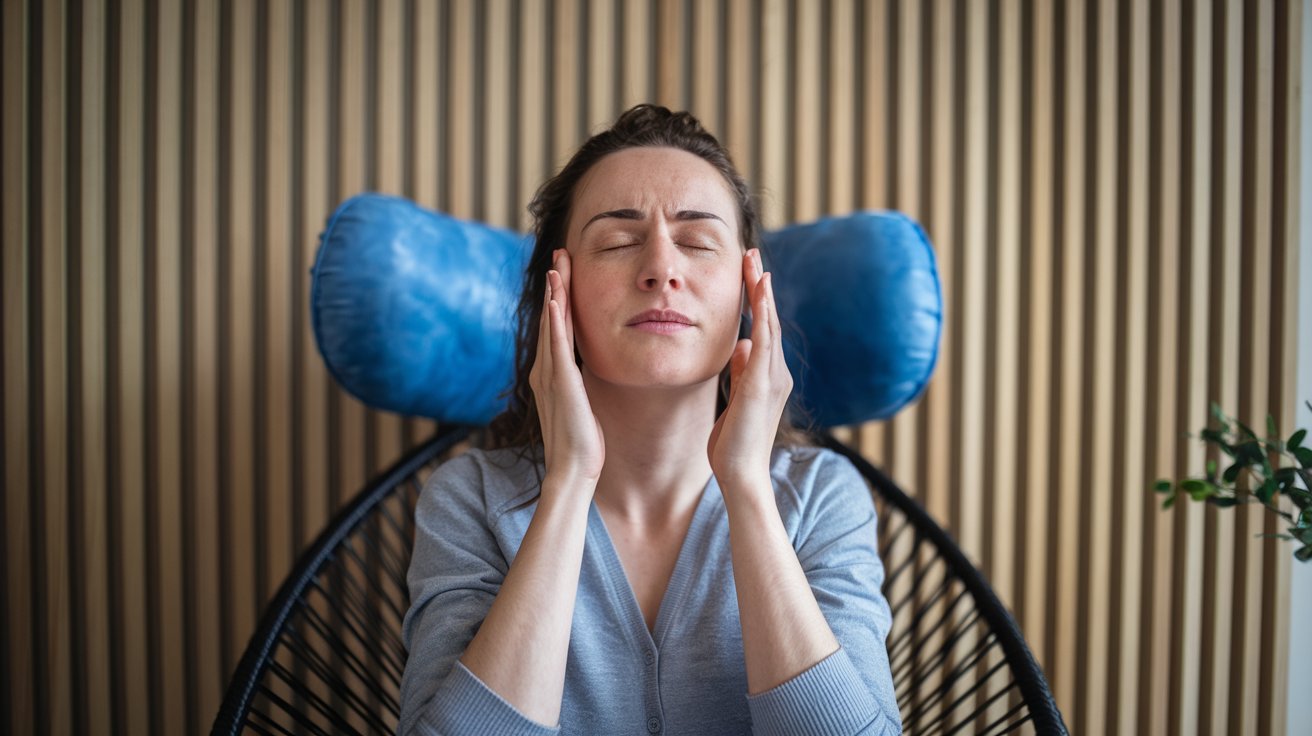EFT tapping for anxiety has earned serious scientific backing, with research revealing it can slash cortisol levels by 50% within an hour—far exceeding talk therapy’s modest 14% reduction.
Understanding EFT Tapping
Emotional Freedom Technique (EFT), commonly known as tapping, is a therapeutic practice designed to reduce psychological stress. It combines elements of cognitive therapy and exposure while simultaneously tapping on acupuncture meridian points.
How It Works
This powerful mind-body approach works on two fronts:
- Physiological Calming: It immediately calms your brain’s anxiety center (the amygdala), reducing the fight-or-flight response.
- Neurological Rewiring: It helps rewire the neural connections that link specific situations to your stress response.
Scientific Evidence Supporting EFT
Research has shown significant biological effects of EFT tapping, including:
- 50% reduction in cortisol levels within one hour of tapping.
- Greater efficacy than traditional talk therapy, which only shows around a 14% cortisol decrease.
- Improvement in symptoms of anxiety, PTSD, and depression across multiple clinical trials.
Personal Experience with EFT
I’ve found this technique particularly effective because it combines physical tapping on specific meridian points with focused attention. This dual-action approach helps ground me in the present moment while neutralizing stressful triggers.
The Science Behind Why EFT Tapping for Anxiety Works
How EFT Tapping for Anxiety Affects Your Brain
I’ve found that the magic of tapping lies in its direct impact on your brain’s fear center — the amygdala. When you engage in therapeutic tapping techniques, you’re essentially sending calming signals that help regulate your emotional responses.
The research backing this up is impressive. Studies reveal that just one hour of tapping can slash cortisol levels by 24%, with some people experiencing up to a 50% reduction. That’s significantly better than traditional talk therapy, which typically achieves only a 14% decrease. If you’re looking for additional stress-relief methods, you might also consider cold therapy for stress reduction.
Scientific Evidence and Physical Benefits
The effectiveness of EFT tapping for anxiety isn’t just anecdotal. A comprehensive 2016 meta-analysis examining 14 randomized controlled trials confirmed substantial anxiety reduction across participants. The physical benefits extend beyond just feeling calmer — tapping creates positive changes in both heart rate variability and brainwave patterns.
I’ve noticed that tapping works through several powerful mechanisms:
- Cognitive restructuring that helps reshape negative thought patterns
- Exposure therapy elements that gradually reduce anxiety triggers
- Acupressure components that activate specific energy points
- Neural pathway modification that decouples stress triggers from physical responses
By combining these elements, tapping offers a unique therapeutic approach that addresses both the mental and physical aspects of anxiety. While exploring anxiety management tools, you might also want to try personalized affirmations for emotional support.
The technique’s ability to decouple anxiety triggers from your body’s stress response makes it particularly effective for long-term anxiety management. This means that situations that once caused panic can become more manageable through regular tapping practice.
Your Step-by-Step Guide to Tapping Away Anxiety
Getting Started with EFT Tapping for Anxiety
Before diving into EFT tapping for anxiety, I recommend rating your current stress level using the SUDs scale from 0-10, with 10 being the most intense anxiety you’ve felt. This creates a baseline to track your progress. Just like sound therapy can calm your nerves, tapping offers immediate relief when anxiety strikes.
The Complete EFT Tapping Sequence
I’ve found that consistent practice of EFT tapping for anxiety delivers the best results. Start at the Karate Chop point while stating your setup phrase: “Even though I feel [describe your specific anxiety], I deeply accept myself.” Repeat this three times.
Here’s the full sequence of tapping points to follow:
- Karate Chop (side of hand): Tap while stating your setup phrase
- Top of Head: Tap while focusing on your anxiety
- Eyebrow Point: Tap at the beginning of the eyebrow
- Side of Eye: Tap on the bone beside your eye
- Under Eye: Tap on the bone under your eye
- Under Nose: Tap between your nose and upper lip
- Chin Point: Tap in the crease below your lower lip
- Collarbone Point: Tap just below your collarbone
- Under Arm: Tap about 4 inches below your armpit
Similar to how cold therapy can reset your nervous system, each tapping point helps release tension and anxiety. Tap each point 5-7 times while repeating a shorter reminder phrase like “this anxiety” or “feeling stressed”.
The beauty of this technique is its accessibility – you can practice it anywhere, anytime. Whether you’re using positive affirmations or combining it with other therapeutic approaches, EFT tapping puts anxiety relief right at your fingertips. Continue tapping rounds until your SUDs score drops to 2 or lower.

Why More Doctors Are Recommending EFT Tapping for Anxiety Relief
Clinical Evidence Supporting EFT Tapping for Anxiety Treatment
Medical professionals are increasingly backing EFT tapping as a powerful anxiety management tool, and the science supports their endorsement. I’ve found that EFT matches the effectiveness of established treatments like traditional cognitive behavioral therapy sessions and EMDR for reducing anxiety symptoms. What’s particularly impressive is that patients often need fewer sessions to see results compared to conventional therapy approaches.
The data is compelling – a 2019 review revealed that people experiencing PTSD symptoms saw their distress levels drop by more than 50% after using EFT tapping for anxiety management. This non-invasive technique can work brilliantly either as a standalone treatment or paired with other therapeutic approaches, like sound healing practices.
Benefits of EFT as a Self-Management Tool
One of the biggest advantages of EFT tapping for anxiety is that it puts you in control of your healing journey. Here’s what makes it stand out:
- Creates lasting emotional relief through neural pathway restructuring
- Offers a medication-free approach with minimal side effects
- Provides an instant anxiety management tool you can use anywhere
- Builds confidence in handling future anxiety triggers
- Combines physical tapping with emotional processing
The beauty of EFT lies in its ability to help you rewire emotional responses to triggers. By incorporating positive affirmations during tapping sessions, you’re actively participating in your healing process. This combination of physical tapping and psychological engagement helps create deeper, more lasting changes in how your body responds to stress.
I’ve noticed that many of my clients appreciate how EFT can be seamlessly integrated with other wellness practices, such as cold therapy for stress relief. This flexibility makes it an excellent choice for those looking to build a comprehensive anxiety management toolkit.

Many people struggling with nervous tension have found relief through techniques like this simple tapping method that targets both mind and body.
Sources:
Church – Athletic Performance
Stapleton – Victims Study
Clond – Meta-Analysis
Bach – Physiological Markers
Sebastian – PTSD Meta-Analysis
Feinstein – Acupoint Review







